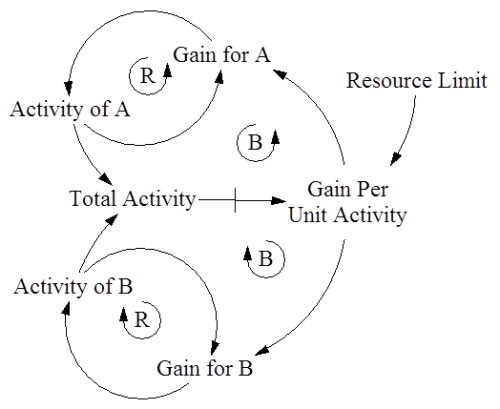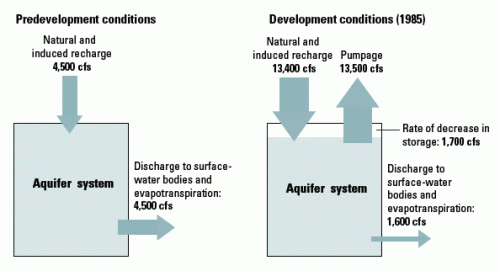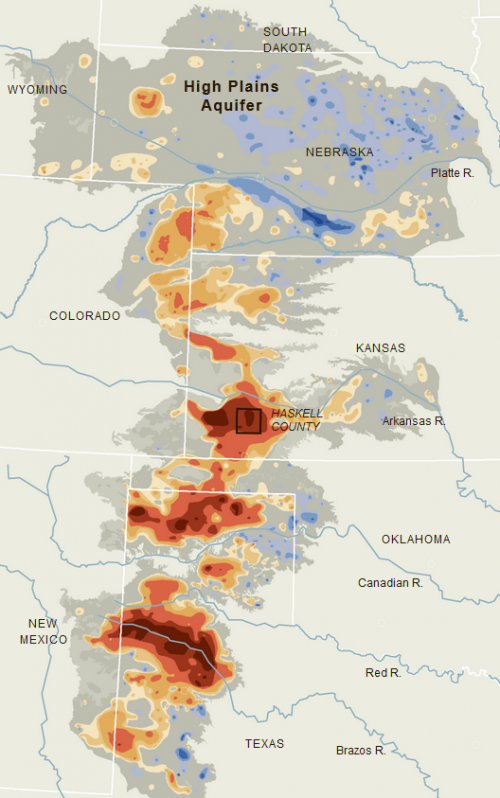The NYT has an interesting article on the decline of the High Plains aquifer, which includes the famous Ogallala aquifer. Water tables are dramatically down (red) in many areas, making irrigation impractical.
Vast stretches of Texas farmland lying over the aquifer no longer support irrigation. In west-central Kansas, up to a fifth of the irrigated farmland along a 100-mile swath of the aquifer has already gone dry. In many other places, there no longer is enough water to supply farmers’ peak needs during Kansas’ scorching summers.
And when the groundwater runs out, it is gone for good. Refilling the aquifer would require hundreds, if not thousands, of years of rains.
This is a widespread, generic problem, and instance of the tragedy of the commons archetype:

Alternately, as an economist might put it, depletion of groundwater is typically an externality, with zero rent paid from users to owners (us).
There are three facets to management of the problem: the commons problem, detail complexity from the complex geology of aquifers, and dynamic complexity. Allocation of property rights solves the commons problem, but not the others (see Erling Moxnes’ interesting work on this).
Sniffing around for material for this post, I found it easy to get lots of complicated information about aquifers, but hard to find any simple stock-flow pictures that revealed their state or dynamics, like this:

Source: USGS
This suggests that there’s some low-hanging fruit to be harvested through provision of simple feedback, as in the Climate Scoreboard.

